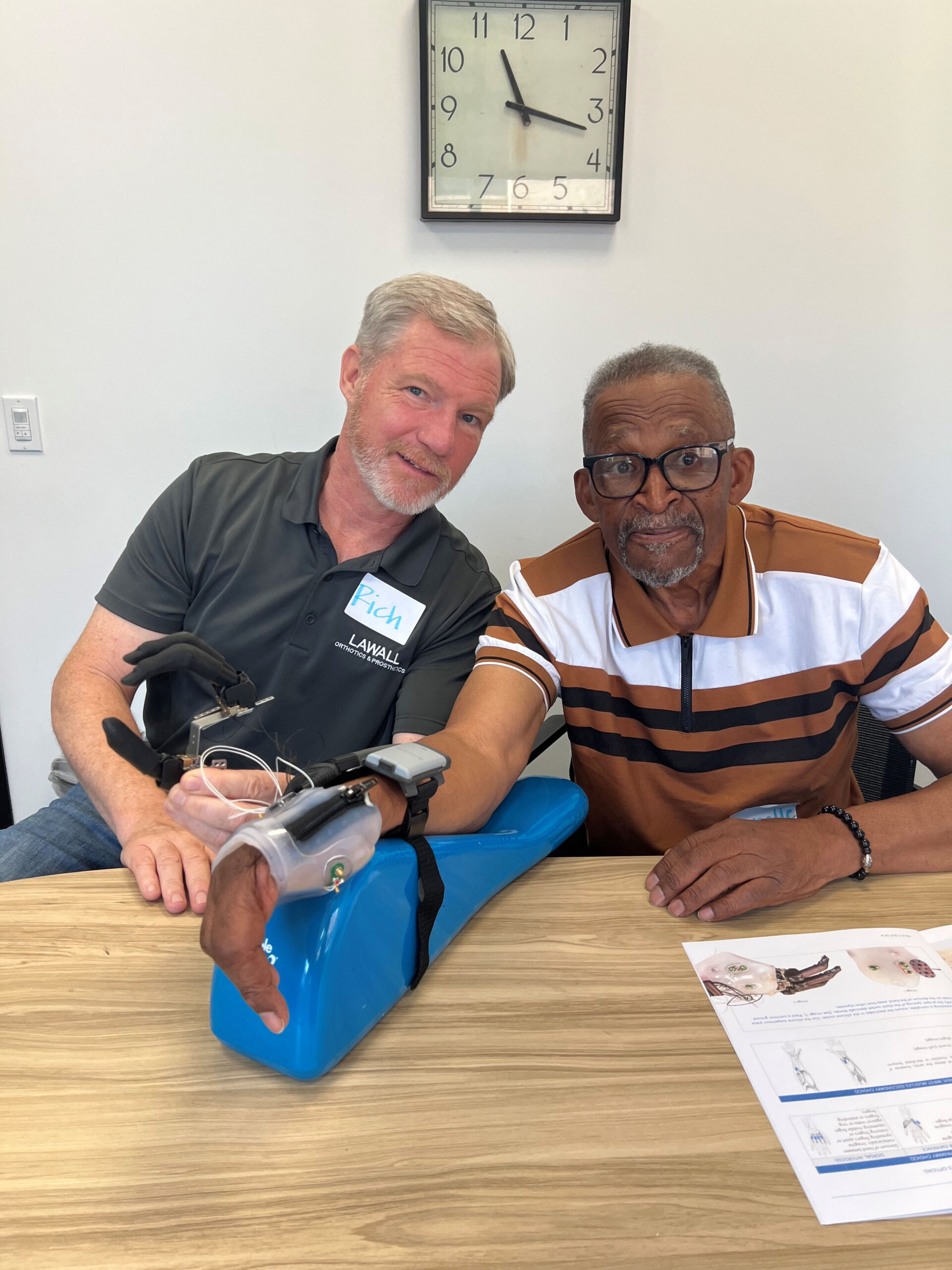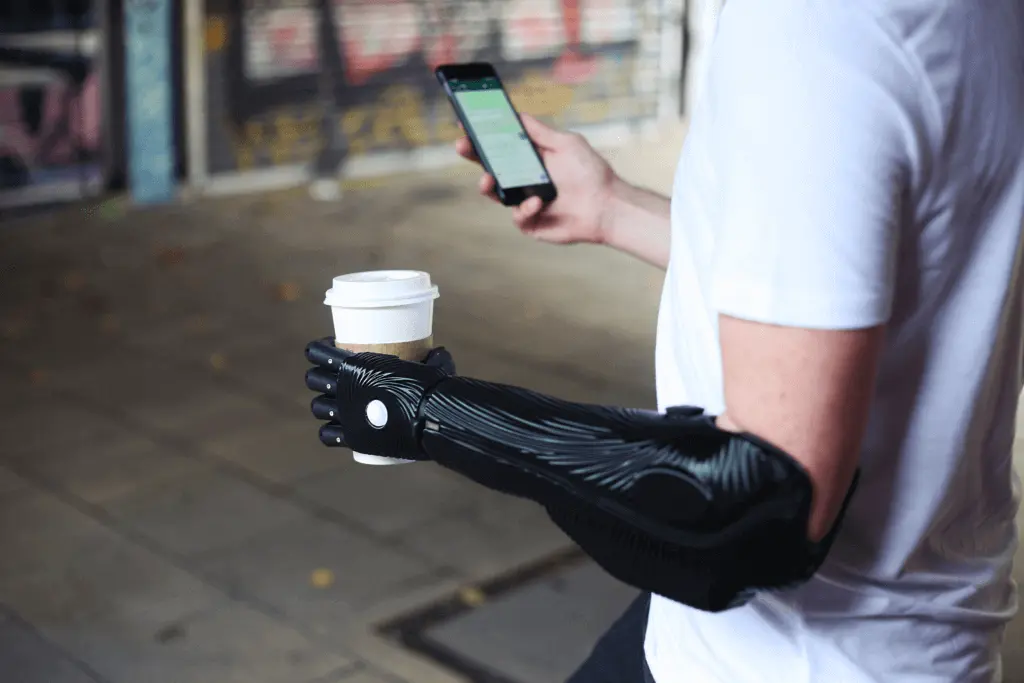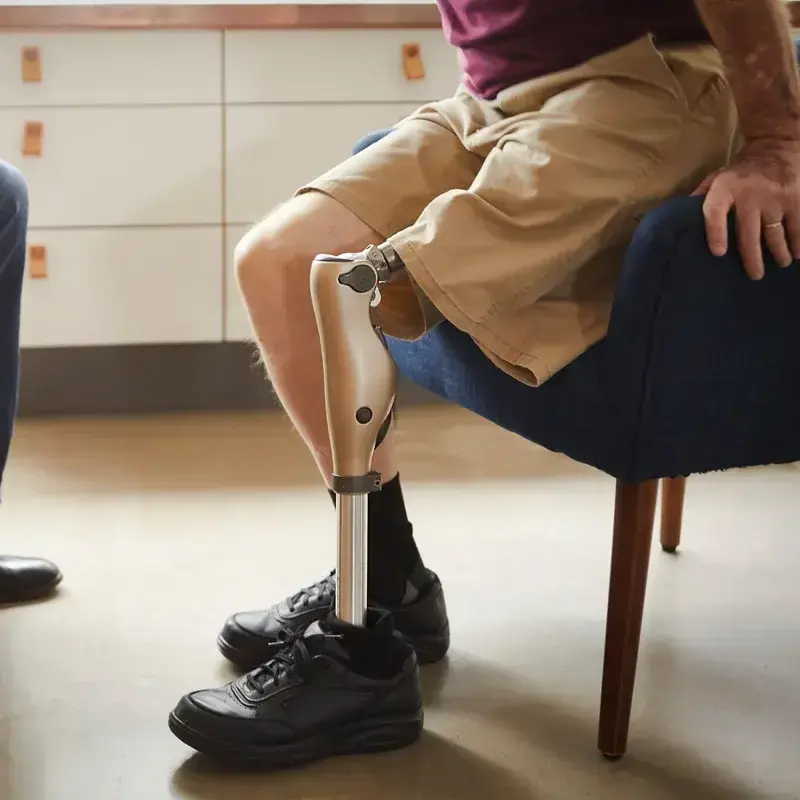Matthew came home at the end of 2013—the same year Sarah underwent amputation surgery. “It sounds insane when I say that out loud,” Linda shakes her head. “I don’t even know why I decided to look at the special focus kids that were on the website of the agency we used for Sarah and Emily’s adoptions.”
But—there was a picture of a little 3-year-old boy with a fused right hand (except for the thumb), a badly twisted left foot, and his right foot missing above the ankle. “I sent the picture to my husband and said, ‘Look at this! This little boy has the same limb differences that Sarah has, just mirror image!’ and my husband said. ‘Well, let’s go get him.’ ”
It was as simple as that.
There were complications—and surprises—however. When they called the agency, they discovered that he was not 3, but 7-1/2 years old; the photo on the web-site was an old one.
Since Sarah had just gotten her prosthesis and was getting up on her feet—not able to manage an overseas trip, as Linda was unable to carry both Sarah and Emily—Guy went to China in December accompanied by his brother, while Linda stayed home to care for the girls.
Every child is different; an older child like Matthew presented new challenges not only due to his individuality and his age, but because treatment methods to address his lower limb issues were already in place—and were not doing well.
“When they got to China,” Linda recalls, “Matthew was wearing a prosthesis but he didn’t have a sock on with it. It fell off all the time. It had a big hinge on it, and it fit on the outside of his pants. He didn’t walk very well with it—he had to bend forward so he was leaning into everything. He’d had plenty of time to develop bad habits.”
In addition, his left foot deformity had to be addressed—and the Reids’ doctors recommended amputation and prosthetic fitting on that side, as well. “From what we understand now, Matthew probably didn’t get a prosthesis in China until he was about 6 years old,” Linda believes. “At the time we felt the most pressing need was to get him up and walking, and amputation would actually be the best that we could do for him—the fastest way to get him up and mobile.”
Communication barriers further complicated matters. Matthew spoke full Mandarin, but virtually no English, so it was “a little harder than dealing with a two-year-old learning the language,” Linda explains. “We had to get translators.”
Matthew had also learned self-reliance, as demonstrated when Guy Reid and his brother took him to a restaurant in China, where the child had a conversation in Mandarin with the waiter and sent his meal back to the kitchen, where it was replaced. (Not many children of seven are precocious enough to complain to the waiter in any language, and request an adjustment in their meal!)
It was about six months before their communication with Matthew improved to the point where the Reids could discuss the amputation recommendations for his foot, which was twisted to the point where he was virtually walking on his ankle.
Matt Moran remembers that Matthew’s foot “was not at all functional. He had a really bad deformity and needed a significant brace with wedging. When he wasn’t very functional with that kind of combination, and we had exhausted all the available options, the family decided to proceed with the revision surgery. The foot was removed so that he would have room to wear a second prosthesis; and since then he’s been much more functional.”
Moran also recalls that when he first met Matthew, he didn’t speak a word of English. “The only way I could communicate was the international language for thumbs up or thumbs down for how things felt! But after a very short period of time, he came in and he was singing the lyrics to ‘Frozen’. He assimilated very quickly into American culture!”
Moran observed that Matthew had significant joint laxity in his hips and knees that made him “very wiggly”.
“That makes the stability of the prostheses a challenge, because they’re only providing support down in his lower legs; but the weakness further up is magnified in his gait. We’ve found a thigh corset to be a good solution. It allows his prosthesis to extend up onto his thigh to give him more stability.”
Extra padding and a silicone liner have also helped his right prosthesis to bear weight more comfortably, in spite of the sensitive bony end of his residual limb.
Physical therapy has not significantly improved his muscle tone, so the emphasis is now on encouraging him to participate in active sports and recreation that he enjoys—like swimming lessons and wrestling. Unfortunately, like many children, he’d rather stay in the house and play video games, Linda worries. Even getting him to do more than float in their above-ground pool is a challenge, she notes, but things are improving and they are seeing a gradual change.
Sarah and Matthew both now have water legs—including a water shoe and insert for Sarah’s remaining foot—which allow them to walk into a lake or wade in a stream; but insurance declined to cover the cost, identifying them as an unnecessary luxury, to Linda’s disgust.
“I beg to differ! How is letting a child go swimming somewhere, or walk through a stream, how is that a luxury? That’s part of growing up, and they’re getting healthy exercise!”
Regular prostheses are not waterproof and can be damaged; but crawling through sand and mud to get into the lake to swim is not a pleasant option. Once in the water, the water legs float, so they are usually kicked off while Sarah and Matthew swim.
“After the two of them got water legs, I took them to a local creek and let them do what kids do—walking in the water. And they had a ball,” Linda reported. “In the summer, kids like to run under the sprinkler and they can’t do that with their regular legs. But now they can put the water legs on and have fun.”
Moran is investigating the potential for a new assistive device with tread, that would help provide traction as well as cushioning and shock absorption during Matthew’s wrestling activities. Running legs like Sarah’s are something else Matthew would like to try.
“It is incredibly inspiring to see kids with physical problems who don’t let their challenges get in the way of them being normal, active kids,” says Moran. “It’s a great job to be able to contribute to their lives in a small way so they can do the same fun activities their friends do—like swimming, running, climbing, wrestling, gymnastics, and more.”
“Matt (Moran) and Lawall have been wonderful to our family,” Linda reflects. “He’s always friendly and helpful and goes out of his way to help accommodate our busy schedules. His care of our children’s needs has had a huge impact on our lives.”






